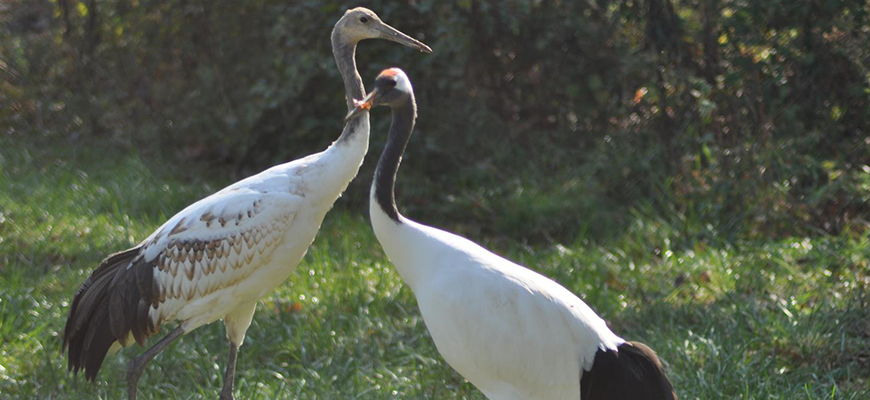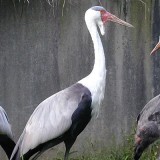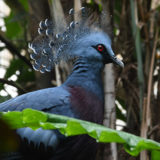CLASSIFICATION
Class: Aves
Order: Gruiformes
Family: Gruidae
Genus: Grus
Species: Japonensis
RANGE
Southeastern Asia including Japan
HABITAT
Can be found inhabiting marshes with deep water and in croplands
SIZE
Height: Reaches to just over 5 feet
Weight: Up to 20 pounds
Wing span: Up to 8 feet
LIFE EXPECTANCY
25 – 30 years, longer in captivity
REPRODUCTION
- Generally lay clutches of 2 eggs per year. That generally hatch at the same time.
- During the spring and summer they fly east to the wetlands in temperate East Asia.
- Both the male and female take part in building the nest and caring for the young. The male generally defends the nest while the female nurtures the chicks.
- These cranes are generally monogamous and stay together throughout the year.
DIET
Wild: Aquatic invertebrates, fish, amphibians, rodents, reeds, grasses, berries
Zoo: Crane pellets, fish, occasional insects
BEHAVIOR
- Can be found in abundance in areas where there are suitable ponds and waterways available, feeding on aquatic invertebrates and vegetation.
- Japanese cranes are very communal and live in flocks
- Use very elaborate dances for courting and communication, including head bobbing, bows, leaps and various “calls”.
POINTS OF INTEREST
- Second rarest crane in the world, only around 1,900 in existence. The Whooping crane is the rarest.
- Prefer to nest and feed in relatively deep water, in comparison with other cranes which usually prefer shallow water.
- This animal is a sacred crane across the Orient, held as a symbol of fidelity in marriage, good luck and a long life.
- Called the Red Crowned Crane due to the red area on the top of their heads which is actually exposed red skin.
STATUS
Endangered, it is estimated that only 1,900 can be found in the wild. Drainage of wetlands and the spread of agriculture on their wintering lands has drastically reduced numbers. Various efforts from the American Zoo and Aquarium Association’s Species Survival Plan, such as conservation-oriented research, and select breeding are being used to boost the animal’s numbers.





